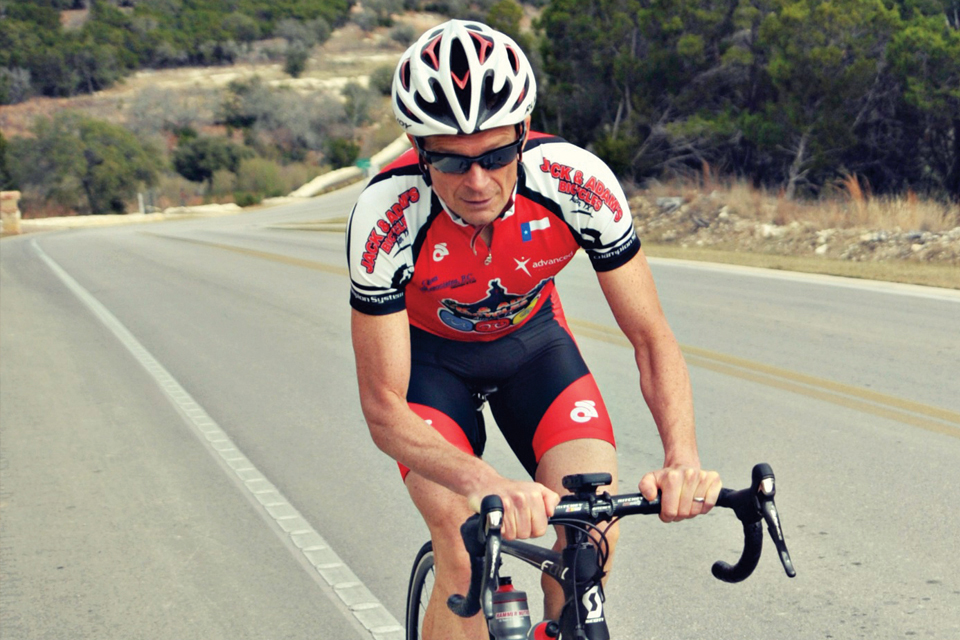Gray Zone Versus Black and White

In Austin, the month of March signals that the first races for triathletes are around the corner. This means workouts in training now have to be more targeted towards race efforts and race intensities. There needs to be a change from the off-season and early spring training to the race-specific training in coming weeks needed to get ready for fast racing.
I usually call this training shift from “Gray Zone” to “Black and White,” where “Black” is hard, “White” is easy, and “Gray” is the middle area. The main thought here is to make sure your easy workouts are VERY easy and your hard workouts are REALLY hard (close to race effort). Often, the key is to make the easy days or recovery periods much easier than you normally do. Otherwise, easy training is too hard (think: “Gray” instead of “White”) and, consequentially, you will be too fatigued to push hard in key workouts (which then end up also being “Gray” instead of “Black”).

I have experienced this myself over the years. I start building up the volume in January after a break around the holidays. After a few weeks, I feel good and often follow a three-week-on, one-week-recovery pattern for a while. Over time, I add some intensity…but none of the workouts are as hard as race efforts. The years where I kept going like this ended up as less successful seasons. I had much better racing in those years when I significantly increased the workout intensity about six to eight weeks before key races while adding more frequent recovery phases.
For type-A triathletes, the shift from “Gray” to “Black and White” is not easy; often, this means that the overall training volume goes down a bit and there are more frequent and extremely easy recovery days, and the constant “I should be doing more” thought is nagging. But it pays off to hold back now. Quality is more important than quantity in your training as you approach race season.
I encourage you to try some of this in your own training. Plan backwards from your key events. Once you know when your main races are, build and increase your training volume to a peak at about eight weeks before the race. Then, make the shift from “Gray Zone” to “Black and White” and focus on very race-specific, hard, quality workouts with frequent and effective recovery periods. Good luck!
Key principles for making the shift to race season
1. Reduce lifting and weight training. Limit the number of weight workouts (usually only once per week at the most) and stop building strength. Instead, focus on strength maintenance.
2. Recovery days are EXTREMELY easy. I usually prefer working out alone on recovery days now so that there is no temptation to push too hard. Some of the athletes I coach work out with spouses or kids on recovery days. It’s all about recovery and getting a break on these easy days now in order to be ready to focus on the quality workouts later.
3. Recovery periods are scheduled more frequently but at shorter duration. Most of the athletes I coach can handle three weeks of training build followed by one recovery week in the winter. Closer to race season, this does not work well; I find that, in the third week, workouts are often decreasing in quality, and a full recovery week is too long for many athletes to feel comfortable. A better setup is, for example, ten days of training build followed by four recovery days. This is typically very convenient for working athletes who can take it easy every other work week, and set up the training block over two weekends.
4. Monitor heart rate monitor and/or power meter more closely. Now is the time to make the key workouts hard and push towards race intensities. So, for those who train with heart rate monitors or power meters, set specific target ranges that will be close to race efforts.
5. I like adding some training races at this point in the season. While these are not “A” races, it makes sense to take them seriously enough to race hard. Training races are a convenient way to get very hard efforts in—and they’re often easier mentally than hard training.
6. The early season is the best time to lose weight, but be careful. Now that races are close, it’s often best to try to maintain your weight. It’s too demanding on the body to train and race at high intensities while focusing on losing weight. It’s much easier to lose weight when longer, high volume, lower intensity training is done earlier in the season.






